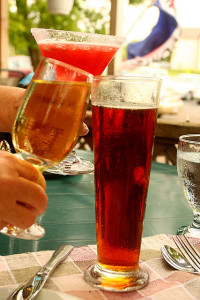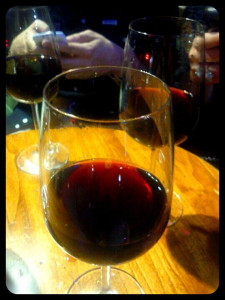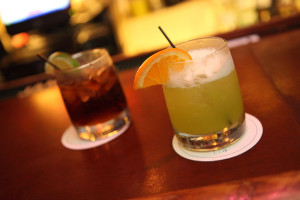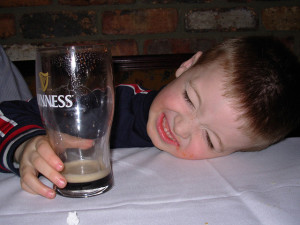Most research studies focused on alcohol consumption and how it relates to health utilize a data collection
method known as self-reporting. Just as it sounds, self-reporting relies on the study participant to recall the amount or type of alcohol they consumed, as well as whatever context that is of interest to the researchers. The researchers must then assume that the information that participant is providing them with is honest and accurate.
One major problem with self-reporting, in alcohol in particular, is that the participant tends to under-report the amount that they drink for various reasons, including embarrassment, fear of getting in trouble, memory recall problems, or flat out denial. Since government recommendations are often birthed by studies using self-reporting methods, it is possible that past and current recommendations are off, which could potentially have profound impacts on public health.
One new preliminary study published in the journal PLoS One aimed to address this issue of accuracy of self-reporting by using Smartphone technology to compare real-time drinking habits to retrospective survey reporting in a British university setting.
Brief Methods
A total of 69 individuals participated in this study, falling between the ages of 18 and 36 (average 21.5 years). Most of the participants were students (85%), white British (95%), and male (59%).
At the beginning of the study, participants were given a survey asking questions related to demographics, whether or not they were a student, drinking habits, and thoughts/beliefs on drinking. The AUDIT survey was also completed by participants, which ultimately identifies any alcohol-related problems that individual may have.
Participants were asked to record their drinking sessions every day (for at least one day but up to a weeks’ worth of drinking sessions) using a Smartphone app and were emails 24 hours and 1 week later to
retrospectively report what they had to drink the day (or week) before without consulting the data in the app (as well as various social context and physical location information).
Participants were asked to indicated on the app when the drinking session began, then the app would prompt them every hour for information such as drink type, social context, and where they were physically located.
Possible drink types included wine, beer, spirits, and other, as well as how much (i.e. a small glass of wine, a pint of beer, a large spirit/mixer, etc). The number of each type of drink was also recorded.
Possible social context responses included with family, with 1 friend, with 2 friends (etc), with work colleagues, alone, etc.
Possible physical location responses included at a friends’ house, at home, at a bar, at a restaurant, at a work function, etc.
When participants were finished entering information that hour, the final question asked if they planned on continuing the drinking session or if they were finished. This answer would then tell the app to either continue prompting the participant for information each hour or to end the session.
Data from the Smartphone apps were sent anonymously via Google Analytics and later analyzed by the researchers using various statistical analyses.
Daily and weekly data from both the Smartphone app and retrospective surveys were analyzed and compared.
Brief Results
- 22 participants provided data for one days’ drinking session.
- 16 participants provided data for two days’ drinking sessions.
- 8 participants provided data for three days’ drinking sessions.
- 4 participants provided data for four days’ drinking sessions.
- There was a 68% compliance rate when participants were prompted by the Smartphone app every hour.
- There was a moderate correlation between daily real-time drinking reports and retrospective reports.
- There was no correlation between weekly real-time drinking reports and retrospective reports.
- Higher alcohol consumption was related to worse recall the day after a drinking session. This pattern was the same regardless of the type of drink.
- Neither context nor AUDIT scores were associated with daily recall.
- Higher alcohol consumption was related to worse recall the week after a drinking session. This pattern was the same regardless of the type of drink, EXCEPT for wine and “other”. (NOTE: This is likely due to the fact that these items were not consumed very much at all by the students, so the sample size was probably much too low for any statistical significance.)
- AUDIT scores were not associated with weekly recall.
- Weekly recall ability was reduced when drinking sessions occurred either at work, or a bar, club, or pub compared with being at home.
- Drinking with family or two or more friends resulted in better weekly recall compared with drinking alone.
Conclusions
The overall results of this study suggest that daily and weekly recall differ significantly in terms of the amount of alcohol consumed compared with real-time reporting via a Smartphone app. Specifically, the more the participant drank during a particular session, the worse their self-reporting the next day or week became.
In terms of social context, the results suggest that being with family or two or more friends actually helps improve recall memory. One reason why this is such according to the authors of the study is that perhaps in a social context, they tend to talk to one another about “what happened last night” and thereby get a better understanding of how much they had to drink based upon what other people said. Of course, this only works if others’ recall memory is still somewhat intact, so it is a theory that would definitely need to be tested.
In terms of drinking alone reducing recall, it’s possible that 1) they could not benefit from the recall of others as they would if they were drinking with friends, 2) they were ashamed they drank as much as they did when they were by themselves, or 3) they actually could not remember as a result of the alcohol. Many questions, with no answers based on this particular study.
Regarding where the drinking occurred, the results suggest that drinking in a bar, pub, or club reduced recall the next day and week compared with drinking in the comfort of one’s or someone else’s home. Again, reasons for this are just conjecture at this point, but perhaps being bombarded with alcohol and drinking-related stimuli in a bar-like setting increases the amount that would have been consumed compared with in a quiet home setting, thus decreasing recall memory the next day/week.
Are these results generalizable?
Well, not really. This is a very preliminary study so the results should be taken with a grain of salt.
First, the sample size was very small. Only 22 participants ended up followed through with the real-time recording sessions during one drinking session, while only 4 performed the task 4 times in a row.
Also, the sample population is very skewed and does not represent the general population. The majority of the participants were white British males who were currently university students. Anyone who has been through college understands the drinking behaviors of college students aren’t exactly the same as they are with most other adults, so the results have the possibility of only being applicable to the university students.
It is also possible that during the course of a drinking session, the participant could have forgotten whether or not they recorded a particular drink thereby increasing the chances of “double recording” a given drink.
Despite these flaws, I feel as though the study was definitely on the right track. I would be very interested to see this type of study performed on a larger scale and with a more population-representative sample. Also, since Smartphones seem to be pretty well-used nowadays, it does seem to be a good way to acquire real-time drinking data. Of course, it won’t catch everybody, but no technique is going to do exactly that.
I would definitely be interested in more studies digging deeper into this phenomenon: why does there
appear to be discrepancies between what someone actually drank and what they reported later on? Does the sheer amount of alcohol fog their memory so much that they just don’t know? Or do they know how much they had to drink but are too ashamed or otherwise afraid to report the correct amount? Maybe a bit of both? Regardless, the results of this preliminary study seem to suggest that this discrepancy is real and larger studies should be performed to confirm or refute the idea.
It is known that self-reporting may very result in the under-reporting of alcohol, and this study provides a small bit of support for that theory. Certainly more research is needed, but the results of this study should certainly pique the interest of those interested in self-reporting and government recommendations related to public health.
Source:




